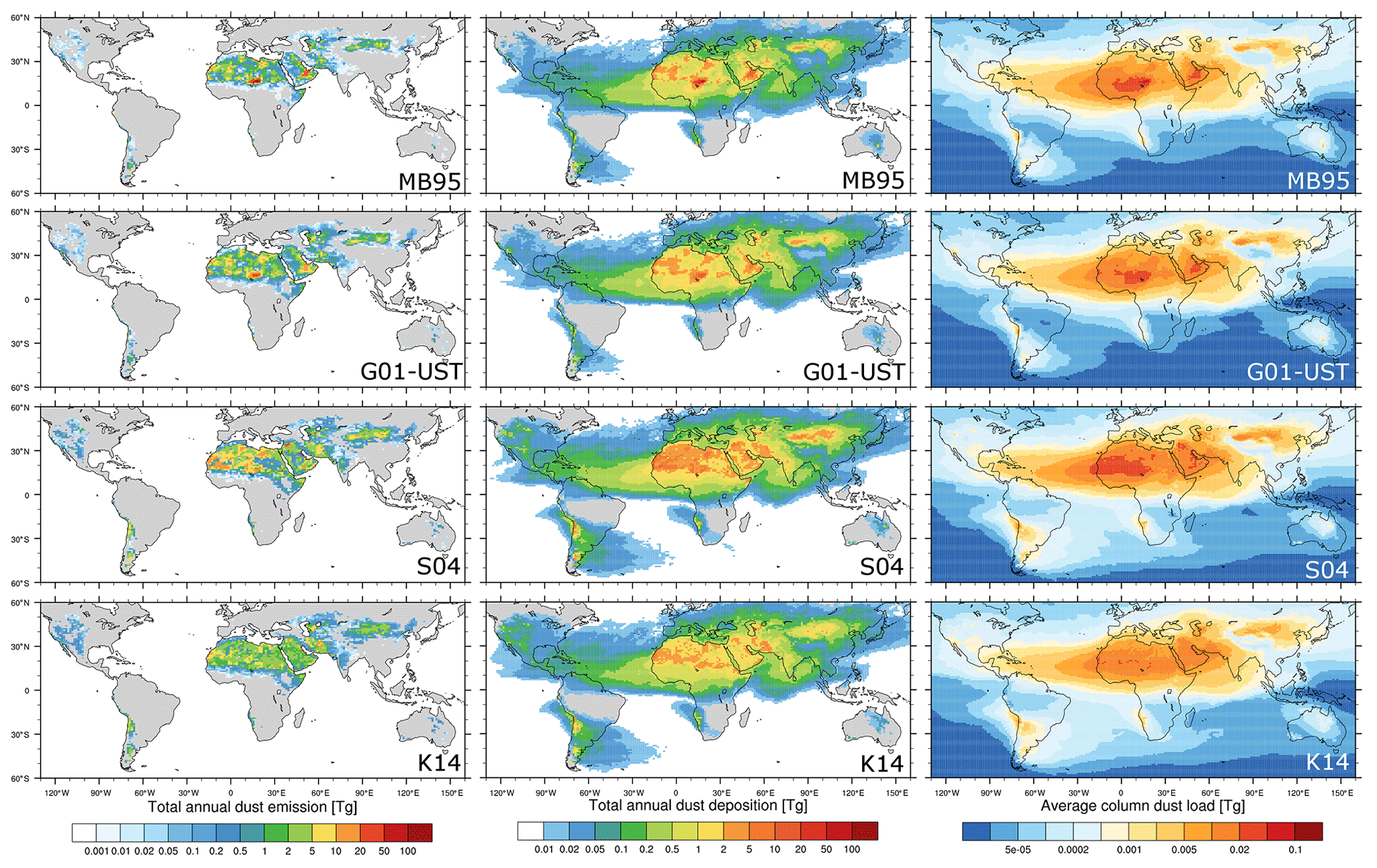Mineral dust in storm-resolving global climate simulations
Global climate simulations are typically conducted on model grids in which neighboring grid points are more than hundred kilometers apart. At such coarse resolution, many atmospheric processes and phenomena, for example thunderstorms, cannot be represented explicitly, but have to be approximated by so-called parameterizations. Considerably higher resolutions were so far not feasible with existing models and available computing resources.
 In the next 4 years, the new project NextGEMS (Next Generation Earth Modelling Systems, https://nextgems-h2020.eu), which is funded by the European Union’s Horizon 2020 program, now aims to develop two new Earth System Models (ESMs) to run global climate simulations at a resolution as fine as 3 km. This resolution will allow a much more detailed and explicit representation of the atmosphere, land, and ocean, to better understand how the Earth system reacts to changing climatic conditions. NextGEMS has started in September 2021 and consists of 26 partners from 14 countries. The Helmholtz Young Investigator Group “Mineral Dust” at IMK-TRO participates in NextGEMS and will contribute to developing the dust representation in one of the new ESMs. NextGEMS logo: https://nextgems-h2020.eu
In the next 4 years, the new project NextGEMS (Next Generation Earth Modelling Systems, https://nextgems-h2020.eu), which is funded by the European Union’s Horizon 2020 program, now aims to develop two new Earth System Models (ESMs) to run global climate simulations at a resolution as fine as 3 km. This resolution will allow a much more detailed and explicit representation of the atmosphere, land, and ocean, to better understand how the Earth system reacts to changing climatic conditions. NextGEMS has started in September 2021 and consists of 26 partners from 14 countries. The Helmholtz Young Investigator Group “Mineral Dust” at IMK-TRO participates in NextGEMS and will contribute to developing the dust representation in one of the new ESMs. NextGEMS logo: https://nextgems-h2020.eu
Mineral dust is a major aerosol type and interacts with clouds and radiation in the atmosphere. It also transports nutrients, which can have impacts on ecosystems far away from desert dust sources. Using an advanced dust modeling system, a new study led by Dr. Martina Klose (Klose et al., 2021) tested different concepts to describe dust emission, ranging from more simplified to more complex treatments, and showed that the global distribution of dust in the atmosphere, and hence the dust climate impact, can differ considerably depending on the treatment (Fig. 1). These insights into the sensitivity of the dust cycle toward key parameters, such as land-surface properties or vegetation coverage, will serve as the basis to design the dust representation in the new high-resolution ESM.

Klose, M., Jorba, O., Gonçalves Ageitos, M., Escribano, J., Dawson, M. L., Obiso, V., Di Tomaso, E., Basart, S., Montané Pinto, G., Macchia, F., Ginoux, P., Guerschman, J., Prigent, C., Huang, Y., Kok, J. F., Miller, R. L., and Pérez García-Pando, C.: Mineral dust cycle in the Multiscale Online Nonhydrostatic AtmospheRe CHemistry model (MONARCH) Version 2.0, Geosci. Model Dev., 14, 6403–6444, https://doi.org/10.5194/gmd-14-6403-2021, 2021.
